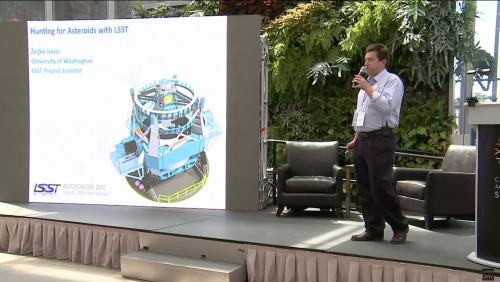LSST Project Scientist Zeljko Ivezic presented a talk describing LSST’s asteroid detection capabilities during Asteroid Day June 30, 2015 at the California Academy of Sciences in San Francisco. During his talk, entitled “Hunting for Asteroids with LSST,” Zeljko described LSST as an “amazing discovery machine for new asteroids” whose unique design, particularly its large mirror and huge field of view, addresses the main challenges of finding asteroids: detecting faint objects and covering the whole sky. Zeljko's talk can be viewed on YouTube.




